The title illustration for the text was created by the Midjourney neural network
The winter stage of the war in Ukraine: Putin puts on the "cold sea"
After the withdrawal of the Russian armed forces from the bridgehead on the left bank of the Dnieper in the Kherson region, the autumn period of the military campaign in Ukraine ended. It is still difficult to say whether the Russians will be able to gain a foothold on the right bank and whether the Ukrainians will try to conduct an offensive here or will transfer the main efforts to the Zaporozhye, Donetsk or Lugansk directions. But most experts agree that in the coming months, the success of the warring parties will depend primarily on how they have adapted to military operations in the conditions of winter cold.
The Kremlin does not hide the fact that the strikes on Ukraine's energy infrastructure are aimed, among other things, at leaving the country without heating in the winter. In Ukraine, as well as in the West, this is well understood. NATO Secretary General Jens Stoltenberg , US Secretary of State Anthony Blinken and Ukrainian President Volodymyr Zelensky say the same thing in different terms: Putin will try to weaponize winter because they are unable to achieve success by purely military means.
Massive strikes by guided missiles and kamikaze drones on the Ukrainian energy system are bearing fruit: since October 10, eight waves of missile attacks have damaged all thermal and hydroelectric power stations and 40% of Ukraine's high-voltage network facilities. As a result, millions of people periodically remain without electricity and, accordingly, heating. Given that the housing stock has been badly damaged during the fighting, the World Health Organization rightly fears a health crisis in Ukraine this winter due to epidemics of colds and a large number of frostbite and hypothermia.
As for the actual hostilities, many experts and officials expect a literal "freeze" of the conflict in the winter, that is, an operational pause. Avril Haynes, Director of National Intelligence, said that both the Armed Forces and the Russian Armed Forces are using the winter to resupply, re-equip and launch offensives in the spring. According to the opinion of the influential American organization Atlantic Council, the Russian command will go into strategic defense, relying on the system of defensive fortifications currently being built, in order to gain time to “run in” the masses of the mobilized in combat conditions and to replenish the units and formations, battered during the series of autumn defeats, with people and equipment.
Moreover, there were leaks in the media from Western politicians and the military about the possibility of reaching a political settlement just at the time when the front was calm due to winter. In particular, Mark Milley, chairman of the US Joint Chiefs of Staff, called the winter a "window of opportunity" for negotiations between Moscow and Kiev. After that, the administration of President Biden had to assure the Ukrainian partners that the statement of General Milli did not mean a refusal to further support the counteroffensive of the Armed Forces of Ukraine.
Ukrainian officials have a completely different opinion. First Deputy of the Verkhovna Rada Committee on National Security, Defense and Intelligence, former Commander of the Airborne Assault Forces of the Armed Forces of Ukraine Mikhail Zabrodsky, in an article published in early November, writes that the Russian side needs a respite in the winter:
“The Russian command needs this [winter] time in order to use all the advantages of the partial mobilization deployed two months ago in a planned and with maximum efficiency.”
It is likely that the Armed Forces of Ukraine will try to keep the initiative and not allow Russian troops to winter in peace in their current positions. This does not mean that the Ukrainians will certainly organize a large-scale offensive in one of the operational areas, but even with a fixed front, the Ukrainian command can hit rear bases, disrupt supply lines and reduce the combat capability of units stationed on the first lines.
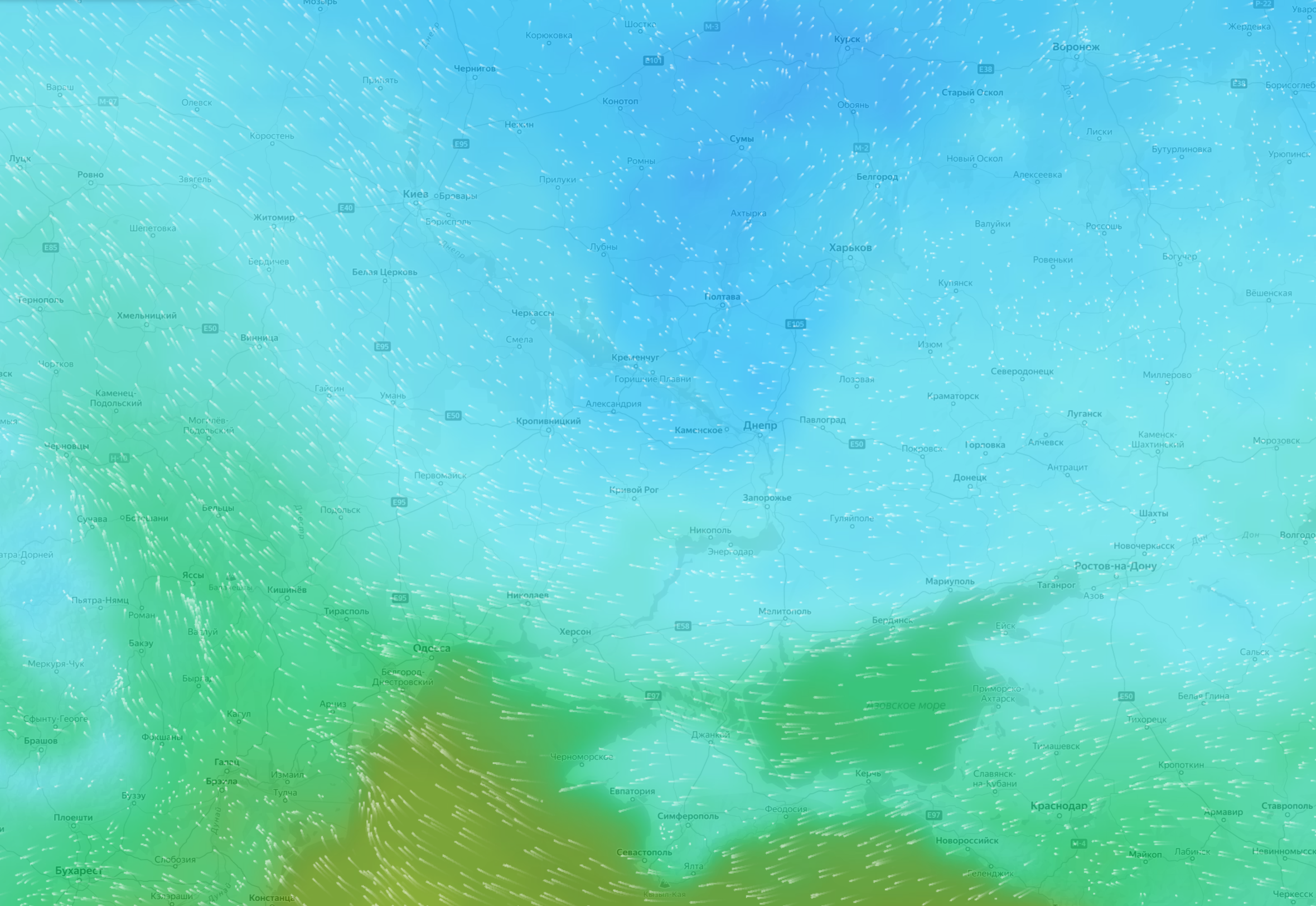
Russia, in turn, has not yet demonstrated the ability to attack anywhere except near Bakhmut, and mainly at the expense of the human resources of Wagner PMCs and without clear goals – after all, even success in this area will not give any special advantages if the Armed Forces of Ukraine they will keep advancing on the Svatovo-Kremennaya line with a threat to Starobelsk and the coverage of the Lugansk grouping of the RF Armed Forces from the north. Thus, in the coming months, except for missile strikes on the energy infrastructure of Ukraine, Russian troops will have nothing to hope for. Most likely, the Kremlin hopes to stabilize the front line over the winter, saturate the defense with mobilized people, and launch a decisive offensive in the spring . But realizing these plans may not be as easy as it seems at first glance. Even if Ukraine does not try to go on a large-scale offensive, the winter itself can take a lot of lives of Russian soldiers.
What winter means for the warring in Ukraine
Ukrainian winters cannot be called really harsh – the temperature usually varies from plus 3 to minus 7 degrees. In American tradition, this weather is called wet cold (literally “wet cold”), and from a military point of view, this is almost the worst of all possible options (except for extreme temperatures from minus 25 degrees Celsius and below). Precipitation looks like rain, then snow, or both at the same time, dirt and slush are everywhere, moisture impregnates uniforms, accumulates in equipment and weapons, and creates “ice porridge” on the roads.
Low temperatures mean increased requirements for the equipment and equipment of personnel, heating of permanent deployment points, arrangement of dugouts and places for sleeping and resting, providing hot meals, planning with a reduced daylight hours (about 9 hours compared to 15–16 hours in summer). Equally important is the competence of the command: erroneous movement orders or, judging by eyewitness accounts , the widespread practice of leaving mobilized units on the front line without communications and supplies can lead to high losses in winter, even if the Ukrainians do not fire a single shot.
Logistics in such weather is also complicated. Wheeled vehicles will not be able to drive off paved roads, tracked vehicles are needed in large numbers, and winter camouflage and antifreeze will have to be obtained for each vehicle. But in January, winter to a certain extent removes restrictions on movement on water barriers that are covered with ice, and reduces the effectiveness of minefields if they are under a thick layer of snow.

It is believed that the conduct of hostilities in the winter requires 50% more supplies, and even now there are big problems with it. Maneuverability will also decrease, the speed of movement on foot on snow cover drops by 50–75%. In addition, on snowy roads or in snow-covered fields, it is easier to identify the location of equipment with reconnaissance drones, so the importance of the proximity of industrial centers, rear bases, supply depots and railway lines increases.
Warfare in winter requires 50% more supplies
In winter, the duration of the so-called "golden hour" (golden hour) is reduced by about half – the period when you can save a soldier who was seriously injured on the battlefield. This increases the sanitary losses and the requirements for equipping field hospitals. In addition, without vegetation (“greenery”), fighters on both sides will have to squeeze more into the ground, wet and dirty (at near-zero temperatures) or frozen (at consistently negative temperatures), which means there will be more colds and similar diseases.
Without natural cover by vegetation, it is easier to open the places of concentration of troops and equipment with drones. True, the drones themselves, due to the reduction of daylight hours and constant cold winds, will have to be used to a limited extent. First of all, this concerns civilian vehicles purchased in gigantic volumes in the interests of both the Russian and Ukrainian armies. According to the Ukrainian side, even serial drones, Geran-2 kamikaze drones of Iranian origin, disappeared from the Ukrainian sky for some time due to poor cold tolerance. Not only drones, but all electronic devices, such as those needed to operate fire control systems or communications equipment, will consume battery life faster. Even the simplest operations for the maintenance of equipment and weapons will become more laborious, as a result, the number of failures, breakdowns, and abnormal work will increase.
Cloudy weather and long nights also impose increased requirements on equipping with advanced optics and thermal imagers (and, accordingly, require measures to combat detection by these same optics and thermal imagers).
It is impossible to dig in with ordinary shovels in winter, you can’t take frozen ground with a entrenching tool – construction and special engineering equipment, as well as the skills of arranging dugouts, will come in handy here (however, without the delivery of reinforced concrete structures, wooden floors, roll insulation and much more, these skills will still not work) . Equipment of engineering units with tractors, bulldozers, manipulators, engineering machines will come to the fore.
Finally, winter standards for providing personnel. This includes winter clothing (insulated boots, gloves, thermal underwear), and an enhanced diet (4,500–6,000 calories per day), including vitamins (to prevent epidemics of colds), and medical remedies for frostbite (primarily legs, speech). we are talking about the “trench foot” or “trench foot” known since the First World War), hypothermia, and also (surprisingly) sunburn of the skin and eyes (snow blindness).
Warfare in winter conditions is also a challenge for the moral and psychological state of military personnel, to which NATO representatives pay special attention. As one of the unnamed functionaries of the alliance told the press, "if you fight in conditions where your tank is constantly stuck and losing tracks, and you constantly feel damp and cold, then this affects the morale of the army." One likely consequence of the demoralizing effects of the cold, combined with the high risk to life and poor supply, is alcohol abuse and a decline in discipline. Ultimately, winter tests all elements of the military mechanism – from the state of technology to the degree of training of commanders.
Who will help winter
According to British intelligence, the cold will create difficulties for both sides of the conflict, but the extent of their impact on Russian troops is likely to be much more significant. Analysts from the American Institute for the Study of War (ISW) agree with them – they believe that winter will not stop the Ukrainian counteroffensive. The autumn and spring thaws are favorable for defensive tasks: the soil is washed away by rains, the maneuvering of troops is difficult. But as soon as the ground freezes sufficiently, it becomes possible to carry out large operations with the help of tracked vehicles.
The Ukrainian military began to prepare sleds in the summer; back in July, they raised the issue of supplying winter uniforms to the Western allies. According to the German publication Spiegel, Ukrainian Defense Minister Oleksiy Reznikov sent a request to NATO Secretary General Jens Stoltenberg for equipment, equipment and accommodation adapted to winter conditions, based on 200,000 soldiers.
Back in July, the Ukrainian military raised the issue of winter uniforms with the allies
In mid-October, at the NATO summit, statements were made that the alliance had already reoriented supplies to winter clothing sets and shifted the emphasis in military assistance to the nomenclature necessary for the winter campaign.
By the beginning of December, Ukraine received 195,000 sets of winter uniforms from Great Britain alone. Germany donated 116,000 winter jackets, 240,000 hats, 80,000 pants, as well as 200 tents and 195 generators. Canada pledged in October to supply 500,000 units of winter jackets, pants, boots and gloves. It is known about the supply of clothing items, thermal blankets, heaters, winter dry rations from more than a dozen NATO member countries.
The AFP agency describes the dugout of one of the units of the 5th brigade of the Armed Forces of Ukraine, stationed in the Donbass, in which, due to heat-insulating materials, it is possible to maintain a temperature of 22 degrees Celsius at 5 degrees outside. According to the servicemen, they received sleeping bags from volunteers that can withstand temperatures of minus 30 degrees. Similar videos (of course, for propaganda purposes) are posted by the Ministry of Defense of Ukraine. Engineering units of the Armed Forces of Ukraine are equipping dugouts from ready-made modular structures on the second line of defense.
What about the preparation of the Russian group for the winter? As far as one can judge from open sources, there is no systematic work in this regard so far, when the calendar winter has already begun. Before reaching the territory of Ukraine, the mobilized posted videos of them warming themselves by the fires. The same way of warming up in a war zone will result in an immediate discovery of a placement and an artillery strike on it. On other commercials , servicemen thank relatives and volunteers for buying warm clothes and picks (!), thanks to which they expect to “exist normally in the winter in the field.”
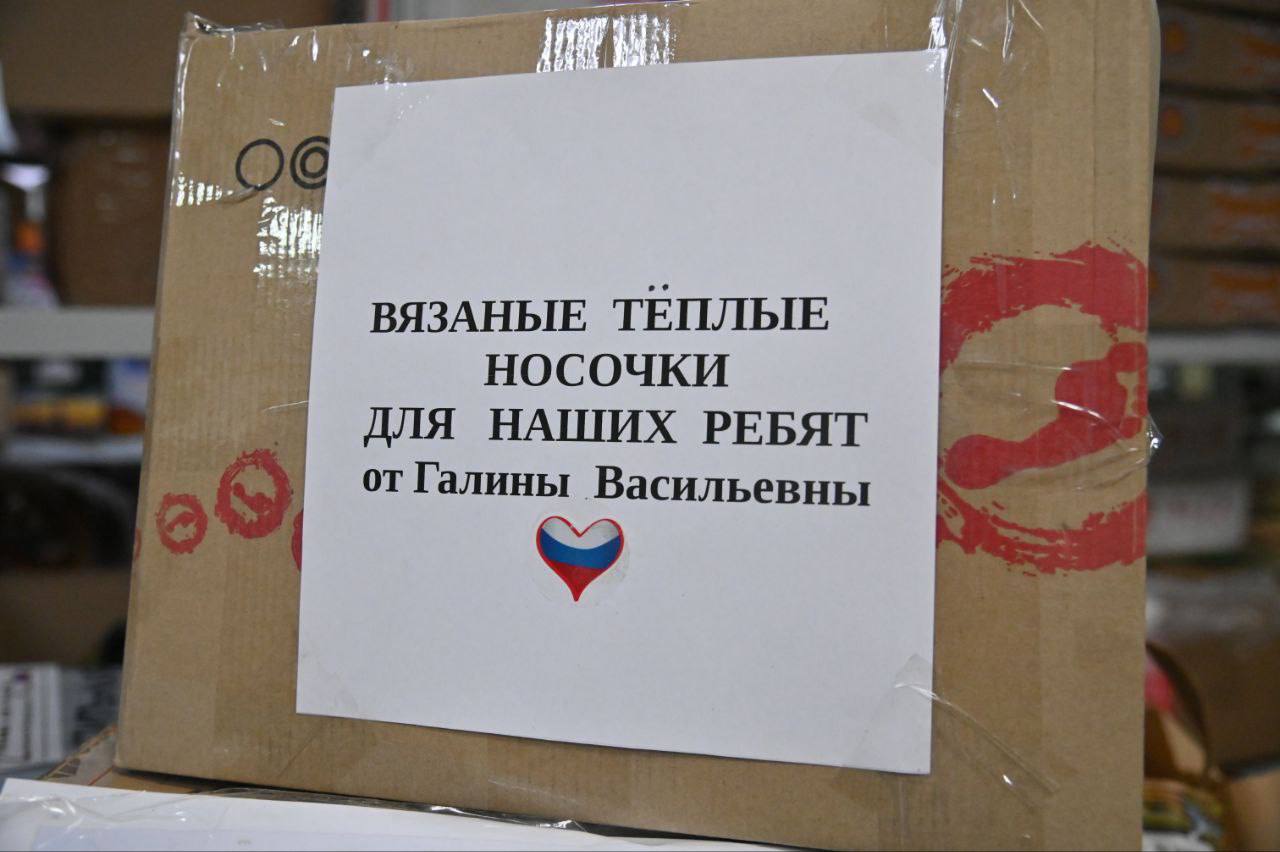
The provision of winter uniforms, at least to the mobilized, is at the mercy of themselves and caring citizens. Socks (certainly with the letter Z) for soldiers are knitted by children and pensioners, warm clothes are delivered by the odious actor Ivan Okhlobystin, who tells on camera that “we have half the front in snot”, while State Duma deputy, lieutenant general of the reserve Andrey Gurulev publicly wonders where 1.5 million sets of uniforms have disappeared from storage warehouses.
It seems that the army leadership did not learn any lessons from the spring experience. At that time, Russian soldiers received frostbite of the limbs on such a scale that it seriously affected the combat capability of entire units. According to the Conflict Intelligence Team, in one of the operational areas, only one battalion-tactical group had tents, and only 20% of the personnel had winter uniforms (moreover, bought at their own expense).
Now history is repeating itself. For example, the soldiers of the 1st motorized rifle company of the 80th separate motorized rifle brigade of the Navy, fighting in Ukraine, had to buy winter uniforms themselves – according to the documents, they were “issued” in the summer and immediately written off as combat losses. Some of the mobilized who fell into Ukrainian captivity express genuine joy, because they will not have to spend the winter in dugouts, where they did not bring anything necessary.
Recordings are circulating on Ukrainian social networks showing Russian soldiers apparently suffering from severe or moderate hypothermia and therefore hardly reacting to grenades flying at them from a drone. Some Z-channels openly write that due to managerial chaos, cases are already being recorded when mobilized people freeze to death. And the notorious "military correspondents" share an incredible "life hack" in terms of cynicism when organizing offensive operations near Bakhmut with the help of Wagner PMC mercenaries recruited from among the prisoners:
“Because of the cold and the lack of prepared positions, in order not to freeze to death, [the mercenaries-zeks] had to break into the dill trenches.”
As a result, the winter campaign may turn out to be a difficult test for the Russian troops, regardless of the actions of the Ukrainians. Judging by how badly the supply and general organization of the newly arriving troops from among the mobilized troops are organized, a significant part of the irretrievable and sanitary losses will be provided by the actions of “General Moroz”, and not the commander-in-chief of the Armed Forces of Ukraine, General Valery Zaluzhny.
The role of "General Frost" in military history
The forces of nature influence the course of hostilities all the time that mankind has been waging organized wars. But winter, with its frosts, cold winds and snowfalls, occupies a special place in this series. The Carthaginian commander Hannibal, who went on a campaign against Rome in 218 BC. e., lost more than half of the army, making the transition through the Alps, due to heavy snowfalls. Sometimes winter, on the contrary, helped the attackers – for example, the victorious Mongol cavalry moved on the ice of frozen rivers from one city to another during the invasion of Rus'. In the New Age, battles were sometimes simply stopped in winter, and the warring armies went to winter quarters.
При этом в исторической публицистике сложился устойчивый образ зимы как традиционной союзницы русской армии на поле брани. И действительно, нападавшие часто несли большие потери из-за российских холодов. Так, в 1707 году шведский король Карл XII во время Северной войны предпринял поход вглубь территории противника и оказался в нынешней Украине. Шведы столкнулись с самыми страшными морозами в XVIII веке в зиму 1708/1709 года, и к весне от армии Карла XII осталось меньше половины из 50 тысяч солдат, что предопределило поражение в битве при Полтаве.
24 июня 1812 года поход на Россию с Великой армией численностью свыше 600 тысяч человек начал французский император Наполеон. Наполеон изучал неудачный опыт Карла XII и сделал все, чтобы не повторить его ошибок. Особое внимание он уделил снабжению и логистике, подготовив тыловые (интендантские) части. В тоже время Наполеон рассчитывал на скоротечную кампанию и быструю победу после генерального сражения. Но боевые действия приняли характер войны на истощение, и, даже потерпев относительную неудачу в сражении при Бородино и оставив Москву, противник не собирался сдаваться. 19 октября остатки Великой армии начали отступление, а уже 6 ноября ударили крепкие морозы. К начальной точке вторжения, реке Неман, вернулось всего 10 тысяч солдат наполеоновской армии. В многочисленных мемуарах участники похода описывали ужасы русской зимы, приходя к выводу, что Великую армию победили «генерал Голод» и «генерал Мороз».
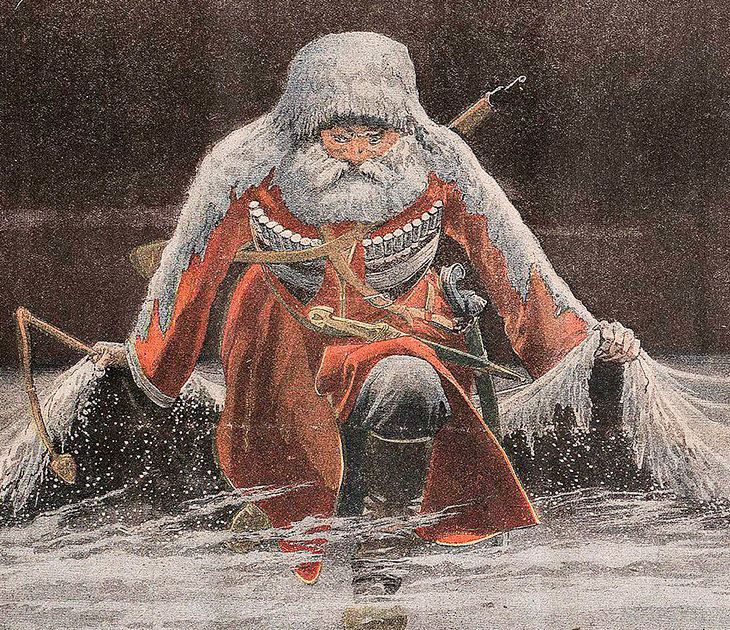
Но эта привычная картина — сильное упрощение. Так, в 1835 году герой Отечественной войны Денис Давыдов опубликовал статью «Мороз ли истребил французскую армию в 1812 году?», в которой довольно убедительно показал, что основные неудачи французов не были связаны с погодой.
Можно вспомнить и другие примеры. В Крымскую войну (1853–1856) в первую зиму высадившиеся на полуострове британцы потеряли 1 942 человека (из общего числа в 50 тысяч) по причине холодных ветров, сырости и грязи. Во время интервенции 1918–1919 годов союзники, прибывшие на север России, столкнулись с такими холодами, что из строя выходило огнестрельное оружие. Совершенно хрестоматийными примерами выдающихся заслуг «генерала Мороза» считаются советско-финляндская и Великая Отечественная война. Причем в первом случае «генерал» воевал за финнов, а во втором — помог Рабоче-крестьянской Красной армии (РККА) разбить немцев под Москвой и Сталинградом. Правда, ни в том, ни в другом случае погодные условия не были решающим фактором (см. ниже подробный комментарий историка Бориса Соколова).
Когда сегодня кремлевские пропагандисты вспоминают роль холодов в предыдущих российских войнах, они упускают главное: и Наполеон, и Гитлер, и экспедиционные корпуса иностранных войск в Крымскую и Гражданские войны воевали зимой на территории противника, далеко от своих тылов и с чудовищно растянутой логистикой. Россия же в 1812-м и в 1941–1945 годах пользовалась поддержкой западных союзников. На этот раз именно российские войска воюют на чужой территории, а западную помощь получает неприятель.
«Выяснилось, что буденовка для суровой зимы подходит плохо»
Историк Борис Соколов о роли холодов в советско-финляндской и Великой Отечественной войнах
Ведение боевых действий там, где стоит действительно суровая зима (с постоянными отрицательными температурами и обильными снегопадами), т. е. в умеренном (особенно в умеренном континентальном) и субарктическом климате, как правило, дает преимущество той стороне, чья армия в меньшей мере оснащена техникой. Если мы возьмем «Зимнюю войну» между Советским Союзом и Финляндией зимой 1939/40 года, то здесь Красная армия, обладавшая абсолютным превосходством в танках и самолетах и имевшая гораздо более многочисленный автопарк, не могла использовать это свое преимущество в том числе из-за погоды.
Зимние условия затрудняли движение техники по дорогам и практически исключали движение вне дорог. Кроме того, требовался повышенный расход горючего, в том числе для обогрева, специальные зимние масла для автомобилей и использование антифриза. Поскольку зимой больше дней с нелетной погодой, чем в теплое время года, это ограничивало действия советской авиации, в том числе из-за затруднений в использовании аэродромов и необходимости обработки самолетов антифризом.
В Красной армии многие военнослужащие были выходцами из южных регионов и не были привычны к холодным северным зимам
В плане обеспечения зимней формой и привычки населения к сильным холодам финская армия также имела преимущество. Практически все население Финляндии жило в условиях суровых зим, и армия имела достаточные запасы зимнего обмундирования для того, чтобы обеспечить им всех мобилизованных. В Красной армии многие военнослужащие были выходцами из южных регионов и не были привычны к холодным северным зимам. Кроме того, в ходе войны выяснилось, что красноармейский шлем «буденовка» для суровой северной зимы плохо подходит. Поэтому с 1940 года его заменили на шапку-ушанку.
Однако нельзя сказать, что именно морозы сыграли главную роль в неудачном для Красной армии ходе боевых действий в советско-финской войне. Главным было превосходство финнов в уровне боевой подготовки солдат и в уровне командования. С другой стороны, Красная армия все-таки смогла прорвать линию Маннергейма в феврале–марте 1940 года, не дожидаясь наступления теплого времени года. Так что зимние трудности решающего влияния на действия советских войск не оказали.
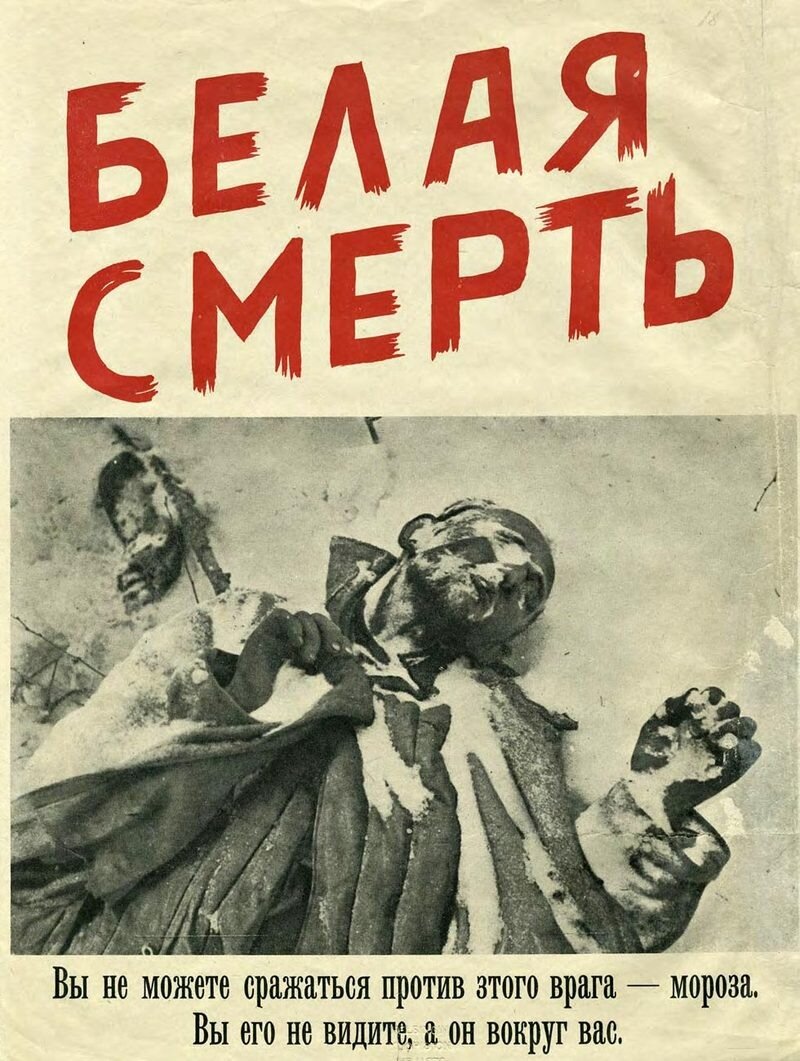
Что касается Великой Отечественной войны, то во время Московской битвы наступавшая на Москву германская группа армий «Центр» действительно испытывала серьезный дефицит зимнего обмундирования. Этот дефицит был следствием не столько физического отсутствия достаточного числа комплектов зимней одежды, сколько логистических проблем. На тыловых складах, размещавшихся вблизи узловых железнодорожных станциях, теплая одежда имелась в достаточном количестве.
Однако из-за нехватки горючего и плохого состояния автомобильных дорог теплые вещи по большей части не успели доставить на фронт. Дефицит горючего был следствием того, что в расчете на блицкриг операция «Барбаросса» начиналась всего лишь с трехмесячным запасом горючего. Несмотря на захваченные трофеи и дополнительные поставки, в октябре 1941 года, в начале сражения за Москву, вермахт уже испытывал дефицит горючего, который усугубился к декабрю, когда началось советское контрнаступление.
В зимних условиях немцы зачастую не могли при отступлении эвакуировать поврежденные или даже исправные танки и самолеты — из-за нехватки горючего и антифриза и состояния дорог. В декабре немецкие безвозвратные потери танков и штурмовых орудий составили 375 машин, тогда как в качестве восполнения был получен лишь 1 танк. В январе 1942 года немцы потеряли 415 танков и штурмовых орудий при восполнении в 159 машин. Еще бо́льшими были потери в автотранспорте.
Фактор «генерала Мороза» в битве за Москву был существенным, и он действовал в пользу Красной армии
Положение с зимним обмундированием для вермахта усугублялось тем, что у него тогда еще не существовало зимней формы одежды как таковой. Поэтому войска на Восточном фронте приходилось снабжать теплыми вещами, собранными в Германии в рамках кампании «зимней помощи» или принудительно изъятыми у жителей оккупированных территорий.
В Красной армии же после финской войны была введена новая зимняя форма с ушанками, ватниками, полушубками и валенками, которыми были снабжены практически все фронтовые части. В результате в некоторых германских частях потери обмороженными превысили потери убитыми и ранеными.
До советского контрнаступления люфтваффе господствовали в воздухе, но к началу декабря господство перешло к советской авиации. Советские самолеты летали с хорошо оборудованных аэродромов московского авиаузла, тогда как аэродромы, с которых действовали люфтваффе, были разрушены советскими войсками при отступлении, а полевые аэродромы обледенели. К тому же немцы испытывали недостаток горючего и порой не могли летать при такой нелетной погоде, при которой советские самолеты имели возможность летать с московских аэродромов.
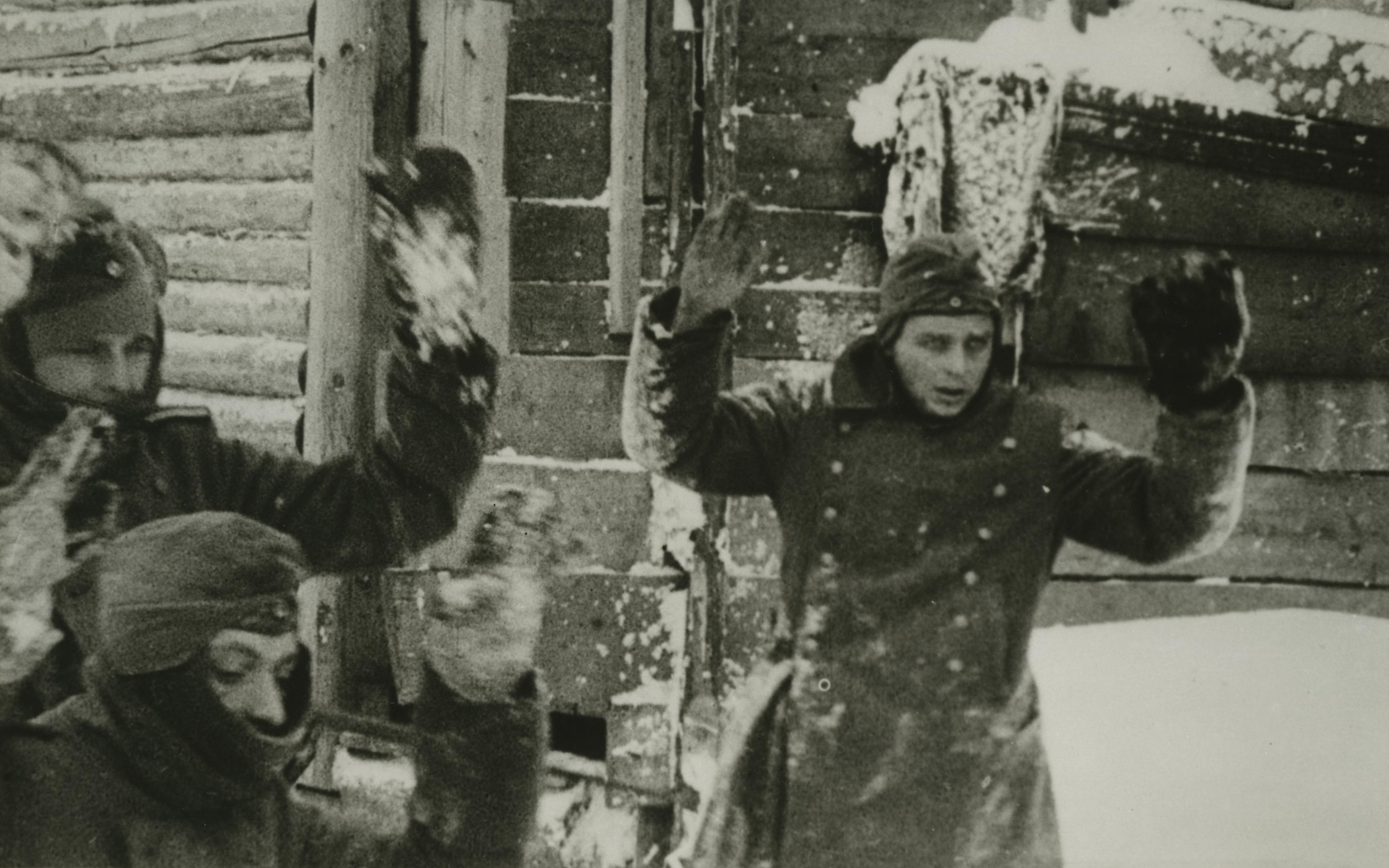
Люфтваффе не могли использовать свое превосходство в качестве самолетов и на уровне подготовки летчиков. Впервые с 22 июня 1941 года советские самолеты делали ежедневно в несколько раз больше вылетов, чем немецкие. В целом фактор «генерала Мороза» в битве за Москву был существенным, и он действовал в пользу Красной Армии. Однако проигрыш немцами этого сражения все-таки в большей мере определялся общим истощением материально- технических ресурсов вермахта в октябре–ноябре 1941 года, чем зимними условиями боевых действий.
К апрелю 1942 года немцы разработали зимнюю форму одежды, и в октябре она была доставлена на Восточный фронт. Но в сражавшуюся в Сталинграде 6-ю армию зимнее обмундирование до ее окружения так и не попало. Дело в том, что армия Паулюса еще до того, как попала в «котел», испытывала значительные трудности со снабжением, поскольку все коммуникации двух группировок, действовавших у Сталинграда и на Кавказе, замыкались всего на одну железнодорожную ветку от Ростова. А зимняя форма не считалась приоритетным грузом по сравнению с боеприпасами и продовольствием.
Окружение же оказалось для немцев полной неожиданностью. После окружения 6-й армии зимние условия ограничивали активность люфтваффе из-за большого числа дней с нелетной погодой, и это самым негативным образом сказывалось на функционировании «воздушного моста», организованного для снабжения.
В Сталинграде зима тоже была на руку Красной армии, но все-таки «генерал Мороз» не сыграл решающей роли в уничтожении армии Паулюса. Тут имело значение истощение ресурсов вермахта на южном крыле Восточного фронта, наступившее уже к началу ноября 1942 года, а также упрямство Гитлера, отказавшегося отводить войска от Сталинграда, несмотря на угрозу окружения. И даже если бы дней с нелетной погодой было бы меньше, все равно советские истребители и зенитки никуда бы не делись, равно как и все увеличивающееся расстояние между аэродромами «воздушного моста» и окруженными.
Материал подготовлен совместно с Софьей Пресняковой


